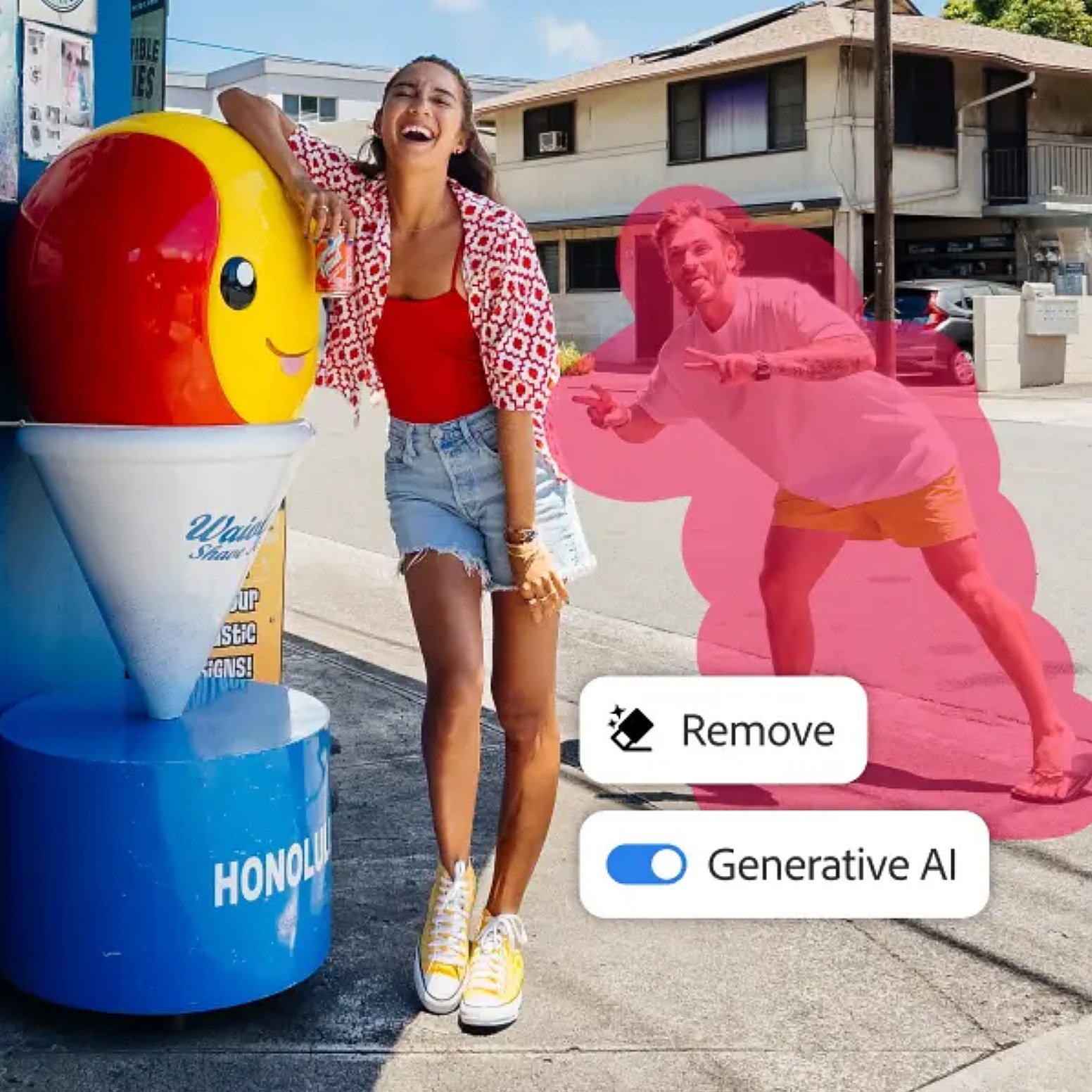Adobe Integrates AI Tools into Stock Image Library, Ensuring Creator Compensation
Image Source: Adobe Stock
Adobe has unveiled a suite of artificial intelligence tools designed to enhance its extensive stock photography library. This move comes after a challenging year for the software giant, marked by legal disputes and backlash from the creative community. As Adobe navigates these turbulent waters, questions arise about the implications for original image creators and the broader stock image market.
Adobe's New AI-Powered Image Manipulation Tools
In an update released this week, Adobe introduced AI functionalities that allow users to manipulate stock images creatively. These tools enable customers to generate new visuals based on existing stock photos, effectively expanding the utility and versatility of Adobe's vast image repository. The integration of AI is part of Adobe's ongoing efforts to stay competitive in a rapidly evolving technological landscape.
[Read More: Unlocking the Magic of Dall-E 3: A Guide to Creating AI Art]
Ensuring Compensation for Original Creators
A key feature of Adobe's new AI tools is the compensation framework for original image creators. According to Adobe, creators will receive payments when their stock images are used as references in AI-generated outputs that are subsequently downloaded. This ensures that contributors continue to earn from their work, even as their images are transformed through AI-driven processes. However, it remains unclear whether existing contributors have consented to these new usage terms or if they will need to agree to updated contracts.
[Read More: Google Vids: A Revolutionary AI Video Creation Tool for Your Business?]
Features of Generative Edits and Variations
Adobe's AI tools offer two primary functionalities: generative edits and generative variations.
Generative Edits: Users can perform modifications such as replacing or removing backgrounds and expanding the image's scope. These edits allow for significant alterations while maintaining the integrity of the original image.
Generative Variations: This feature includes 'style' and 'composition' adjustments. The 'style' option applies the aesthetic elements of a chosen stock image to a newly generated image based on a text prompt. The 'composition' feature matches the outline and depth of an existing image to guide the composition of a new one, ensuring consistency with branding or specific visual guidelines.
Adobe claims that these features will make stock assets more adaptable and appealing for licensing, potentially increasing the earnings opportunities for contributors.
[Read More: Adobe Firefly: Leading the Way in Responsible Generative AI for Creators]
Impact on the Stock Image Market
The introduction of AI manipulation tools by Adobe is poised to transform the stock image market. By enabling more dynamic and customizable uses of stock photos, Adobe is enhancing the value proposition for both users and creators. This could lead to higher demand for stock images, as well as more innovative applications in content creation across various industries.
[Read More: Google Released Imagen 3 - But Currently US Only!]
Creators' Concerns and Adobe's Response
Despite the promising aspects of Adobe's AI integration, the company faces significant skepticism from the creative community. Earlier this year, the Federal Trade Commission (FTC) filed a lawsuit against Adobe, alleging deceptive practices related to long-term contracts and restrictive cancellation policies. Additionally, a controversial update to Adobe's terms of use sparked calls for a boycott from creators, who were concerned about Adobe's increased access and rights over user-generated content.
In response to these issues, Adobe has reiterated its commitment to compensating creators and enhancing their earning potential through AI tools. Matthew Smith, Adobe's Vice President for Strategy, Design, and Emerging Products, emphasized that generative AI is meant to complement rather than replace stock imagery and creative professionals.
[Read More: Elon Musk’s Grok-2 Unrestricted Political Imagery - A Double-Edged Sword?]
Adobe's Turbulent Year
Adobe's foray into AI tools comes after a year marked by both innovation and controversy. The company's efforts to bolster its AI capabilities have been driven by intensifying competition from tech giants like OpenAI. While Adobe continues to lead in software solutions such as Photoshop, it has struggled with maintaining trust among its user base amidst legal challenges and unpopular policy changes.
[Read More: Exploring the Best AI Tools for Photorealistic Images]
Analysis: Balancing Innovation and Creator Rights
Adobe's latest move highlights the delicate balance between leveraging AI for technological advancement and safeguarding the rights and interests of content creators. While the promise of increased earnings and creative flexibility is attractive, ensuring transparent and fair compensation mechanisms is crucial for maintaining trust within the creative community. The lack of clarity regarding consent for existing contributors may pose challenges for Adobe's reputation and the adoption of its new tools.
[Read More: Topaz Labs Unveils Gigapixel Pro: Elevate Your Images to 1 Billion Pixels!]
About Adobe
Adobe Inc. was founded in December 1982 by John Warnock and Charles Geschke, who left Xerox PARC to develop and sell the PostScript page description language. In the same year, Apple Computer acquired 19% of Adobe and became the first licensee of PostScript, leading to the introduction of the LaserWriter printer in 1985 and the desktop publishing revolution. Adobe's first application, Illustrator, was introduced in 1987, followed by Photoshop in 1990. In 1992, Adobe launched the Portable Document Format (PDF), revolutionizing document sharing. The company continued to expand its product line with acquisitions, including Macromedia in 2005, bringing Flash and Dreamweaver into Adobe's portfolio. In 2013, Adobe transitioned to a subscription-based model with the introduction of Adobe Creative Cloud, offering a suite of creative applications and services.
[Read More: Unmasking the Illusion: Your Guide to Identifying Fake and AI-Generated Images]
Source: Digital Camera World, Wikipedia, Adobe, Big Frame, Zippia












